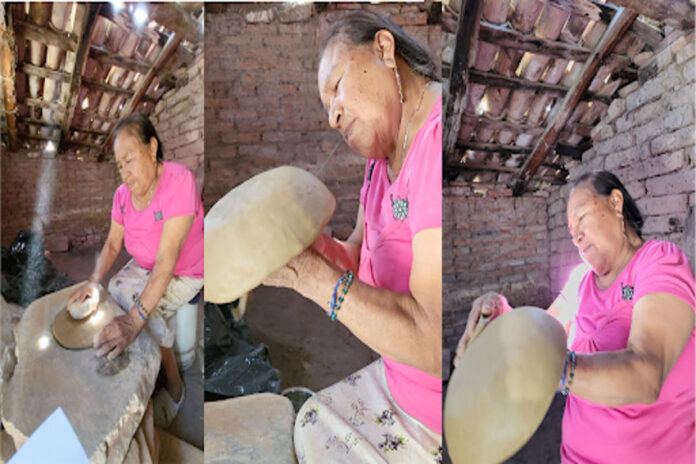Just past the brickmaking town of Pantoja, Guanajuato, where bricks are shaped by hand and fired up in rustic kilns to supply construction across the Bajío region, lives Nicanora Valdez, the last potter in her family.
I arrive unannounced, eager to meet this woman in her seventies who creates ceramic bowls entirely by hand, keeping alive a tradition passed from her grandfather to her father and now solely rests with her.
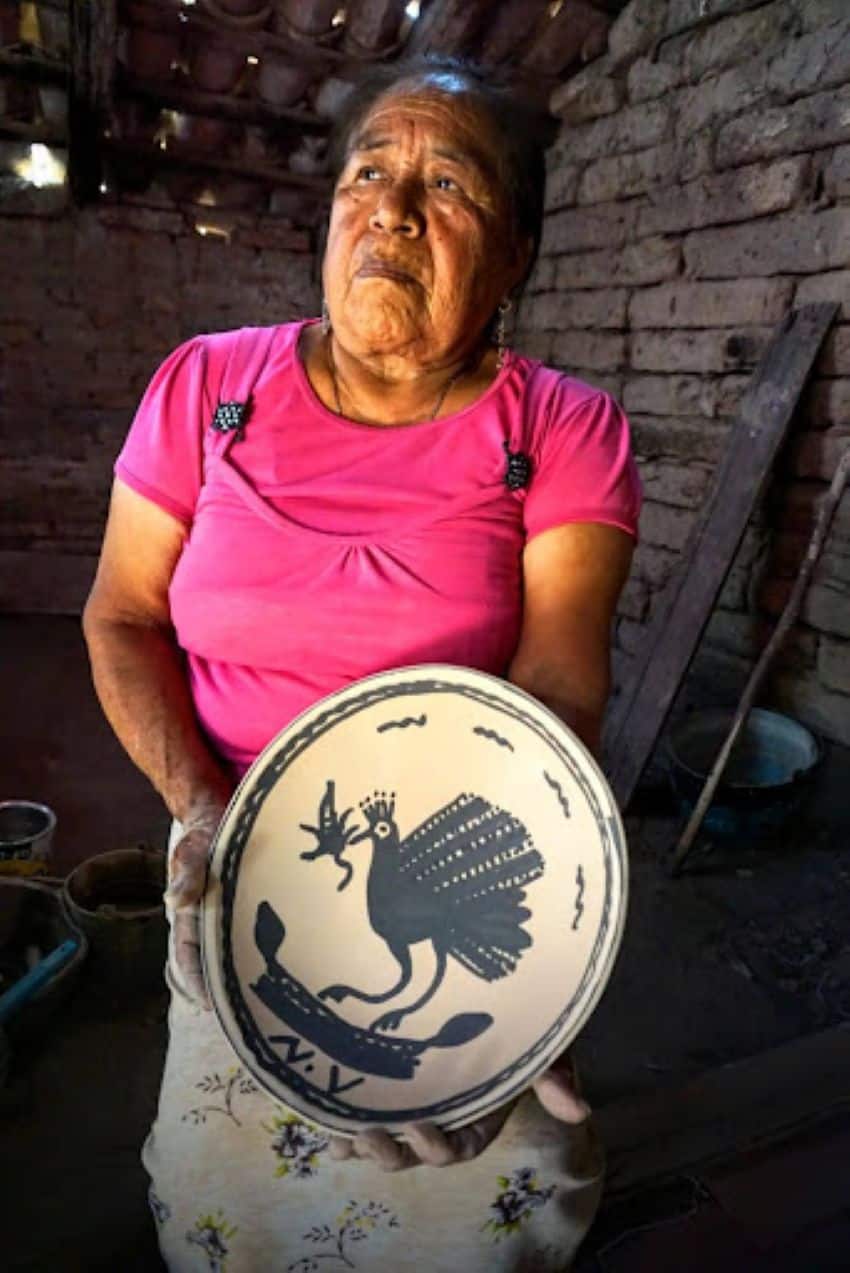
This is the second installment of Hecho en México, a series that celebrates the humans behind Mexico’s vibrant creative landscape. From weavers and painters to potters like Valdez, we explore the traditions, challenges and triumphs that drive potters like her and the rest of the nation’s artisans — weavers, painters, silversmiths and more — to share their talent while preserving Mexico’s rich artistic heritage.
On a sunny Sunday afternoon, I ride with my friends, Mary and Joe Molinaro, the latter a ceramics artist, to visit Valdez, who lives on a modest ranch with red-brick structures sprinkled among the pines and cacti.
Since Valdez doesn’t have a cell phone, Mary and Joe call out to her when we arrive. She soon appears from behind her workshop, a space her grandfather built — where he and Valdez’s father also shaped ceramic bowls by hand.
Her eyes light up when she sees the Molinaros; they’ve brought carnitas and fresh clay, part of their weekend ritual to support her craft. I introduce myself in Spanish, and, with a timid smile, Valdez invites me inside her workshop to share her story.
“My father used to hand us a little ball of lodo [mud] and say, ‘Get to work,’” she recalls, her voice soft. “That’s how we started when we were kids.”
It was her father, Esteban Valdez, a master potter, who taught Nicanora to mold clay as a child. Having learned from his father, Toribio, Esteban would gather clay from a nearby riverbed and transform it into simple bowls painted with animals, plants and Mexican historic figures like El Pípila.
Esteban wasn’t alone in his workshop. His wife Viviana, Nicanora’s mother, was his partner in life and craft. She helped with tasks like preparing the clay and packaging bowls for sale.
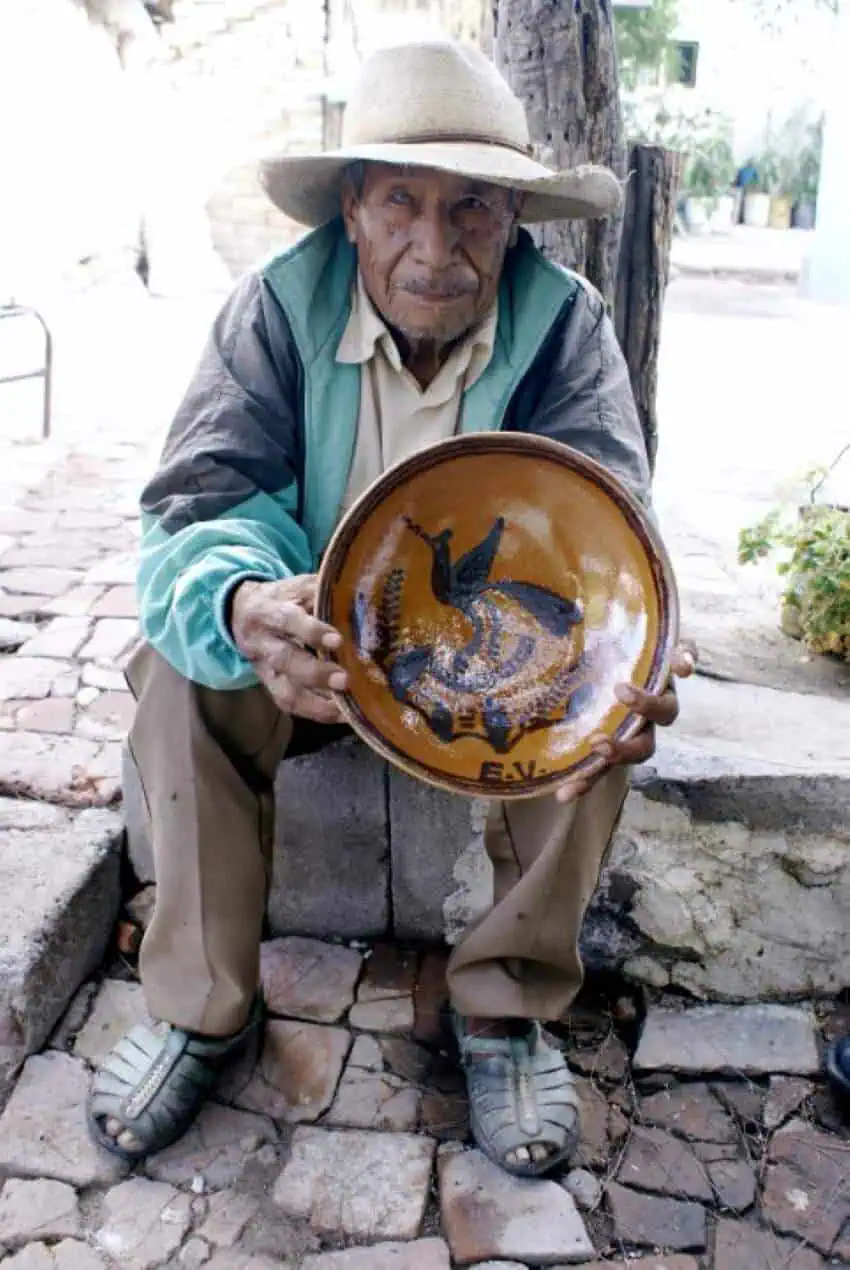
At first, the bowls were only sold locally, in markets and town fairs in the municipalities of Comonfort and San Miguel de Allende. But over time, Esteban’s pieces gained widespread recognition, finding their way into private collections and galleries, including the Museo Indígena in Mexico City.
Though Esteban had hoped that more of his nine children would learn his skill, only Nicanora showed interest. She learned to shape bowls and often joined her parents on pottery-selling trips. When one of Esteban’s pieces was inducted into a museum in the city of Guanajuato, Nicanora was there to witness the moment.
“It felt so special to see both my parents recognized,” she says with a tone of nostalgia. “By then, my mom was already sick, and just seeing them get called up to receive the diploma… I think I almost cried.”
Not long after that ceremony, Valdez lost both of her parents, first her mother, then her father, who was in his mid-’80s. The grief that followed was profound, and in that quiet, she stepped away from her family’s pottery legacy.
It would be five years before Valdez would touch clay again.
A serendipitous meeting
In 2024, a stranger knocked on Valdez’s door, looking for her father.
“The man said he’d seen a piece my father made and wanted to meet him,” she says, recounting how she returned to make pottery. “But I had to tell him, ‘That’s not possible. My father passed away years ago.’”
Disappointed, the man asked if she had any of her father’s work left — she didn’t — and if she worked with clay herself. She explained that it had been years since she had last made anything and that she no longer had access to the kind of fine, clean dirt her father had once used to make clay for his pottery, dirt she described as “como harina,” or like flour.
The man offered to introduce her to Joe Molinaro, a U.S. ceramic artist living in San Miguel de Allende.
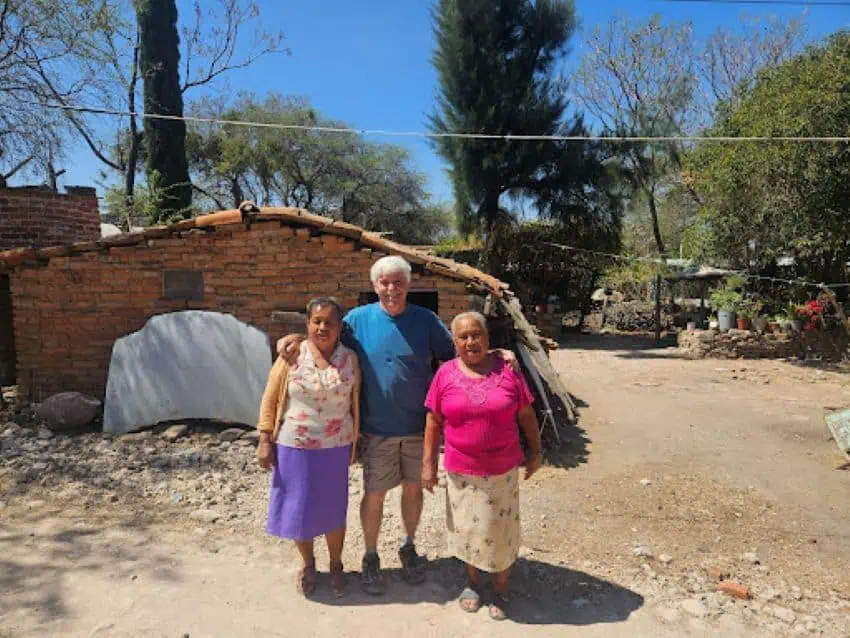
“That’s how it all started,” Valdez says, her eyes crinkling into a smile. “One day, the man’s friend showed up at my house with good clay, and now he and his wife… We’ve become good friends.”
She glances toward the workshop’s outside yard, where the Molinaros stroll through her garden, chatting with Valdez’s sister, who has stopped by to say hello.
“Sometimes Joe jokingly says his wife is ‘mucho problema para mi’, and I give Mary a stone to hit him,” she says with a chuckle. “Then we all laugh.”
From clay to finished bowl
A few weeks after my initial meeting with Valdez, I return with Joe and Mary, who bring her pigments for painting and more clay, so she can show me how she makes her bowls. This time, Valdez recognizes and warmly invites me into her pottery workshop, where she immediately gets to work.
First, she begins with a small ball of clay, much like the ones her father handed her when she was little. She warms the ball in her hands and rolls it out on a large stone in her workshop, the same one her father — and before him, her grandfather — used.
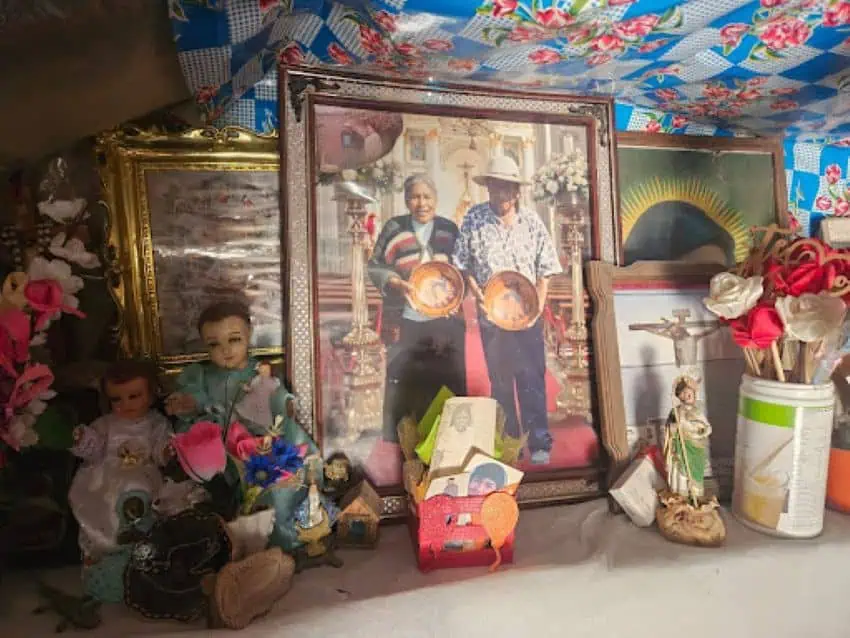
Next, once the clay is flat, she drapes it over a bowl-shaped mold, carefully cutting any excess with a fine thread. She does it with an expert’s steady focus, holding one end of the thread between her teeth, a technique passed down from her father — except that her father used the hair of a donkey’s tail.
Once the bowl is trimmed, she uses a second small, flatter ball of clay to smooth the surfaces of the formed bowl, ensuring every curve is just right. Then, she lays it out to dry, first inside her workshop and then under the sun.
Valdez can create about 20 bowls like this over two days. Once they’re dried, she paints them with the pigments Molinaro brings, decorating with similar motifs to her father’s works: representations of animals, plants and everyday Mexican life, such as a man selling paletas (popsicles). She signs each piece with her initials: N.V.
“Así se lo ponía mi papá,” she says proudly, explaining that her father also would mark his bowls by painting his initials.
Since Valdez doesn’t own a kiln to fire her ceramics, Joe takes the greenware — clay objects not yet fired up — to his workshop at home. There, he bisque-fires them and applies a clear glaze, giving the pottery a durable, glossy finish.

Art, aging and everyday life
Valdez keeps her father’s legacy alive one bowl at a time, with the help of Joe, who sells her finished pieces online without taking a cent in commission. The modest income from her pottery is spent on essentials, like beans and the corn she uses to make fresh tortillas.
More than just meeting her daily needs, the income has given her something meaningful: a newfound independence, after years of relying on her family, before she made pottery.
Life on the ranch is simple. When she’s not working with clay, Valdez enjoys sewing napkins, tending to her flowers and walking around the land that’s been in her family for generations. She never married and doesn’t have children, so she knows her family’s artistic tradition will likely end with her.
As the years go by, her body aches more. Sitting for hours at a time in her workshop is getting harder. Yet, every time she completes a new batch of bowls for Joe to sell on her behalf, Valdez feels something deeper within her that transcends tiredness.
“It feels like pride — true pride — when I can say, ‘I’m done, it’s ready,” she says of each of her bowls. “It feels good to see something made from the earth and take it to the point where it will now be used in someone’s kitchen.”
On the way back to San Miguel, as we drive again past the kilns firing up thousands of construction bricks in Pantoja, I feel a quiet hope: that many will discover Nicanora’s pottery online and help preserve her story, just like those who have honored and upheld her father’s art and story before her.
Thank you to Mary and Joe Molinaro, who were instrumental in introducing me to Nicanora and generously sharing their time and knowledge. If you’d like to preserve Nicanora’s history and that of her family’s, you can purchase one of her bowls by contacting Joe directly via e-mail at jmolinaro2009@gmail.com. You can also learn more about Nicanora on the Facebook page he’s created about her work.
Hecho en México is a series written by Karla Parra, a Mexican-American writer born and raised in Mexico. While working on her memoir, Karla writes on Substack about home, creativity, and identity. She also works with the team behind the annual San Miguel Writers’ Conference. You can find her on Instagram @karlaexploradora.
